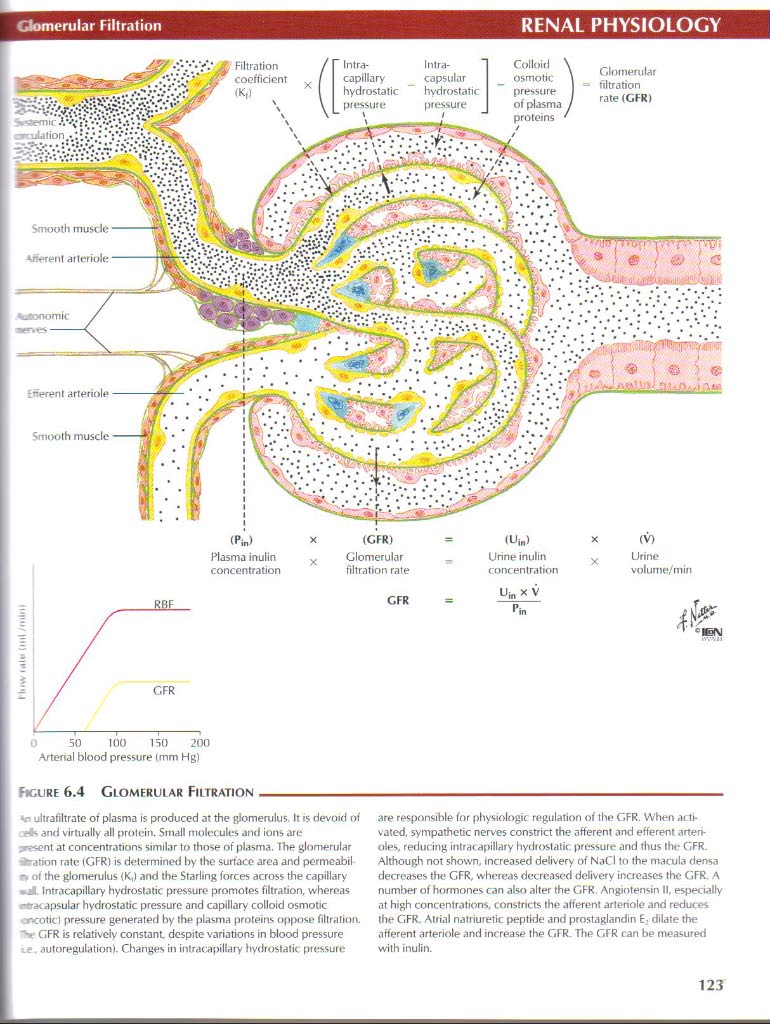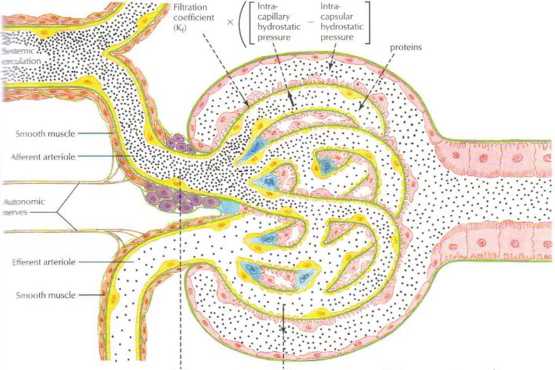netter106

Glomerular Filtratinn
RENAL PHYSIOLOGY
Colloid osmotic pressure of plasma

(Uln)
Urine inulin concentralion
i 50 100 150 200
Arterial blood pressure |mm Hg)
Figurę 6.4 Glomerular Filtration-
n ultrafiltrate of plasma is produced at the glomerulus It is devoid of and viriually all protein. Smali moleculcs and ions are
at concentrations similar to those of plasma. Fhe glomerular kation ratc (GFR) is determined by the surface area and permeabil ot the glomerulus (K,) and the Starling forces across the capillary • jł. Intracapillary hydrostatic pressure promotes filtration, whereas «tra< apsular hydrostatic pressure and capillary colloid osmotic ■fKOtic) pressure generated by the plasma proteins oppose filtration. S GFR is rclativcly constant, despite variations in blood pressure ?. autoregulation). Changes in intracapillary hydrostatic pressure are responsible for physiologic regulation of the GFR. When acti-vated, sympathetic nerves constrict the afferent and efferent artere oles, redut ing intracapillary hydrostatic pressure and thus the GFR. Although not shown, mcreased delivery of NaCI to the matula densa decreases the GFR, whereas detreased dclivery inc/eases the GFR. A number of hormones can also alter the GFR. Angiotensin II, especially at high concentrations. constriets the afferent arteriole and reduces the GFR. Alrial natriuretic peptide and prostaglandin 6: dilate the afferent arteriole and increase the GrR. The GrR can be measured with inulin.
Wyszukiwarka
Podobne podstrony:
netter60 Electrocardiogram: IIICARDIOVASCULAR PHYSIOLOGY Norm.il Sequence of Cardiac Depolarization
30345 netter110 va" ReabsorptionRENAL PHYSIOLOGY Proximal tubule Loop of Henie i Distal tu
59840 netter71 CARDIOVASCULAR PHYSIOLOCY Short-Term Regulation of Blood Pressure 2/3t „NE Ganglion-
netter180 Actions of InsulinENDOCRINE PHYSIOLOGY Figurę 8.20 Actions of Insulin- Insulin is a fueł-s
netter89 RESPIRATORY PHYSIOLOGY Pulmonary Circulation Distribution of Pulmonar> Blood Flow
więcej podobnych podstron